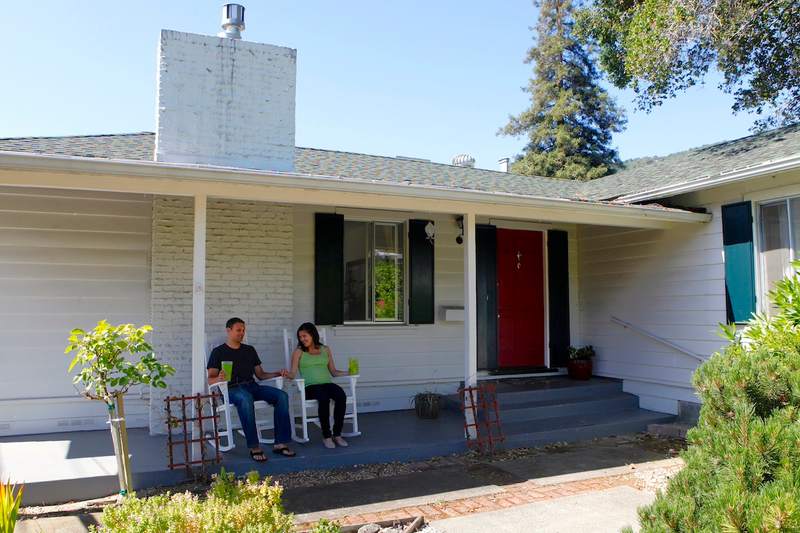One of the benefits of homeownership is that you build equity and can borrow that equity when you need it. If you’re not sure how much you need or have multiple projects on your to-do list, a home equity line of credit is a flexible way to borrow your equity. Learn more about how much you can borrow with a HELOC.
Key Takeaways:
- A HELOC lets you borrow your home equity as needed to pay for major expenses.
- How much you can get in a HELOC depends on how much equity you have, as well as your credit score and DTI ratio.
- If you’re on the fence about a HELOC, you also might consider a home equity loan or cash-out refinance.
What Is A HELOC?
A HELOC allows you to borrow your home equity, which is the difference between what your home is worth and how much you owe on it. It’s a revolving line of credit you can draw from on an as-needed basis up to your credit limit. Most HELOCs have a variable interest rate, which will affect how much interest you pay on what you borrow.
Multiple factors determine your borrowing limits, including your credit score. Your lender usually won’t let you borrow all your equity.
Once you take out a HELOC, the draw period begins. It allows you to draw from the credit line as needed using a credit card or checks. It usually lasts 10 years, and you make payments on what you’ve borrowed, much like a credit card account. Some lenders will allow you to make interest-only payments during this period.
When the draw period ends, the repayment period begins and typically lasts 10 to 20 years. You can no longer draw on your credit line at that point, and you’ll make payments on principal and interest until the balance is repaid in full.
A HELOC is a secured loan, and your home is the collateral. If you default on your HELOC, your lender could foreclose and you’d lose your home.
Why Home Equity Matters To Your HELOC Amount
Your home equity determines how much you can borrow with a HELOC. Equity represents how much of your home you own free and clear versus the amount you owe on it. When you take out a HELOC, you’re borrowing this equity and reducing your ownership stake in the home. Most lenders will let you borrow a specific percentage of your home equity but not all of it.
Borrower Requirements For Getting A HELOC
Here are some common criteria lenders require from borrowers applying for a HELOC:
- Credit score. You typically need a credit score of at least 620 to qualify for a HELOC, though many lenders require a minimum score of 680. Your credit score measures your payment history, outstanding debts and delinquencies. A higher credit score means your lender sees you as less of a borrowing risk.
- Debt-to-income ratio. Your DTI ratio shows how much of your gross monthly income is taken up by debt payments. A lower DTI ratio shows lenders you have room in your budget to afford the loan payments, while a higher DTI ratio suggests you may struggle to repay your HELOC. Lenders typically look for a DTI ratio no higher than 43%.
What’s Your Goal?
Buy A Home
Discover mortgage options that fit your unique financial needs.

Refinance
Refinance your mortgage to have more money for what matters.
Tap Into Equity
Use your home’s equity and unlock cash to achieve your goals.
How Much Can You Borrow With A HELOC?
How much HELOC money you can get varies depending on how much equity you have and how much of that equity your lender will let you borrow. Again, equity is the difference between what your home is worth now and how much you still owe on it. Your lender usually won’t let you borrow all your equity and will limit you to borrowing a percentage of your equity, typically 80% to 85%.
Ready To Become A Homeowner?
Get matched with a lender that can help you find the right mortgage.
How To Calculate Your HELOC Borrowing Limit In 3 Steps
When considering a HELOC, how much you can borrow depends on a variety of factors. Let’s say you own a home worth $450,000 and have an outstanding mortgage balance of $300,000. Here are three steps you’ll take to calculate your maximum HELOC amount.
1. Estimate Your Home’s Market Value
Your lender will determine your home’s market value by ordering an appraisal. A licensed appraiser will determine the value by assessing the home’s location and current condition. They’ll also look at what comparable homes in the area have sold for.
2. Multiply By Your HELOC Limit
Once you know your home’s fair market value, multiply it by your lender’s HELOC limit. If your home is worth $450,000 and your lender’s limit is 85% of that value, that comes out to $382,500.
3. Subtract Your Current Mortgage Balance
Finally, you’ll subtract your current mortgage balance to come up with your borrowing limit. Since you still owe $300,000 on your mortgage, you’ll subtract that number from $382,500. That leaves you with a borrowing limit of $82,500.
Take The First Step To Buying A Home
Find a lender that will work with your unique financial situation.
Alternatives To A HELOC
If you’re not sure a HELOC is the right choice, here are two other ways you can borrow the equity in your home:
Home Equity Loan
A home equity loan is often called a second mortgage, since it’s a loan you’ll take out separately from your current mortgage. That means you’ll have to make two mortgage payments on your home. A home equity loan usually comes with fixed rates, meaning your monthly payment will stay the same. Most lenders will allow you to access up to 80% of the equity in your home.
Cash-Out Refinance
A cash-out refinance involves replacing your current mortgage with a new one that’s based on your home’s fair market value. You pay off your original mortgage and can keep the difference in cash to use for pretty much any purpose you’d like. You repay the amount borrowed as part of your new mortgage.
FAQ
Here are answers to common questions about how much you can get with a HELOC:
– Debt consolidation
– Paying for home improvements or repairs
– Paying medical expenses
– Building an emergency fund
The Bottom Line
If you’ve built equity in your home, a HELOC gives you access to a consistent line of credit, and you can use the funds for pretty much anything. How much equity you have will determine how much you can borrow. You can’t borrow all of it and will have to follow your lender’s requirements for the draw and repayment periods, but it remains a flexible way to access your equity as needed to pay for major expenses.
More From Quicken Loans:

Jamie Johnson
Jamie Johnson is a Kansas City-based freelance writer who writes about a variety of personal finance topics, including loans, building credit, and paying down debt. She currently writes for clients like the U.S. Chamber of Commerce, Business Insider and Bankrate.












